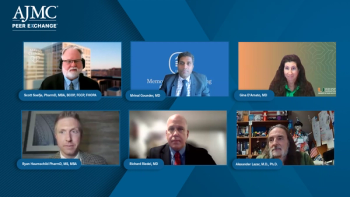
Impact of Access Challenges on Patient Outcomes in CLL and MCL Care
Panelists discuss the primary access challenges in chronic lymphocytic leukemia (CLL) and mantle cell lymphoma (MCL) treatment, including financial barriers and health care system limitations, and how these obstacles impact patient outcomes and treatment efficacy.
Episodes in this series

Video content above is prompted by the following:
The treatment landscape for chronic lymphocytic leukemia (CLL) and mantle cell lymphoma (MCL) has significantly advanced with the development of Bruton tyrosine kinase (BTK) inhibitors, offering improved efficacy and safety over traditional chemotherapy. However, access to these novel agents remains a significant barrier. The high cost—averaging around $15,000 per month—and the need for indefinite treatment pose financial burdens for patients and healthcare systems alike. These economic challenges are compounded by disparities in access to diagnostic tools and specialized care, particularly in regions where these diseases are less frequently encountered.
Prognostic testing plays a critical role in guiding treatment decisions, especially since CLL and MCL can be driven by specific molecular markers that influence treatment response. Yet, studies have shown that many patients still do not receive appropriate biomarker testing, which can lead to the continued use of outdated, less effective chemotherapy regimens. This not only impacts clinical outcomes but can also increase the risk of toxicity and hospitalizations. The lack of physician familiarity with the latest therapies in non-specialist settings may also contribute to suboptimal prescribing practices, further widening the treatment gap.
Addressing these challenges requires a multifaceted approach, including increased provider education, greater patient awareness, and policy-level changes to improve affordability and access to targeted therapies. Expanding access to prognostic testing and ensuring insurance coverage for novel agents are essential to shifting the standard of care. As these innovative treatments become more central to managing CLL and MCL, improving access will be critical to realizing their full potential—enhancing survival, reducing toxicity, and ultimately delivering better outcomes for patients across all care settings.
Newsletter
Stay ahead of policy, cost, and value—subscribe to AJMC for expert insights at the intersection of clinical care and health economics.
















































